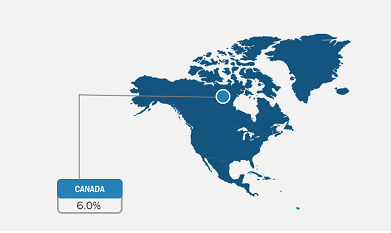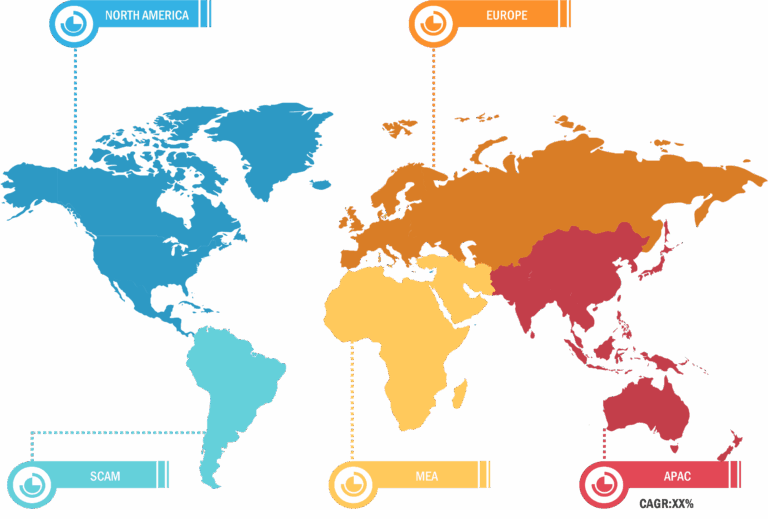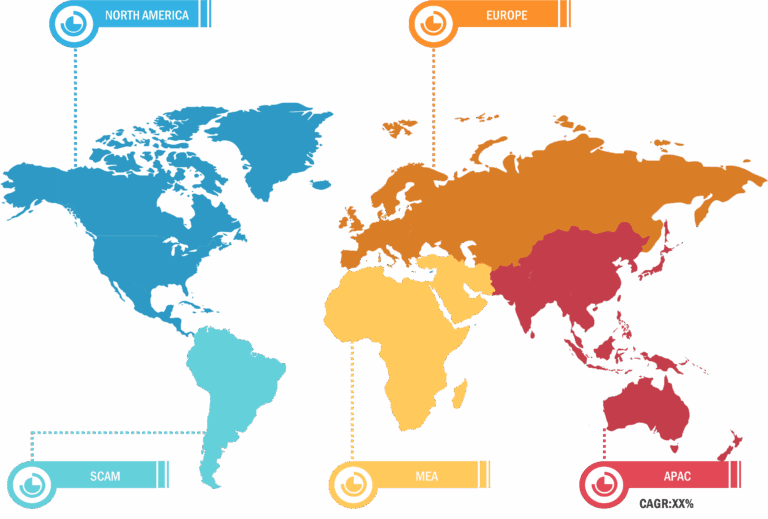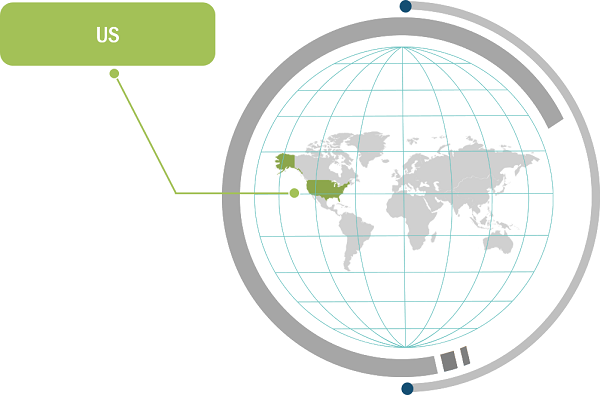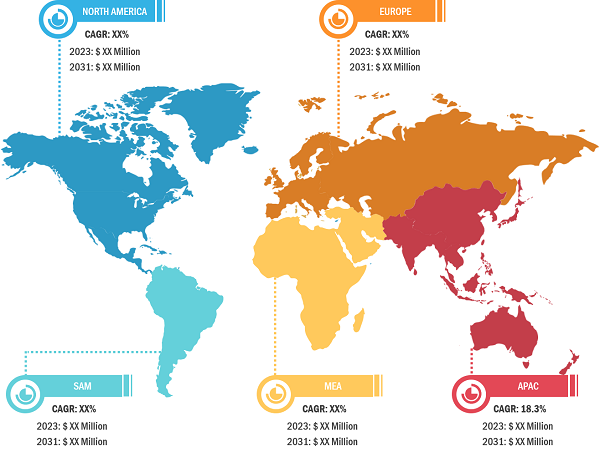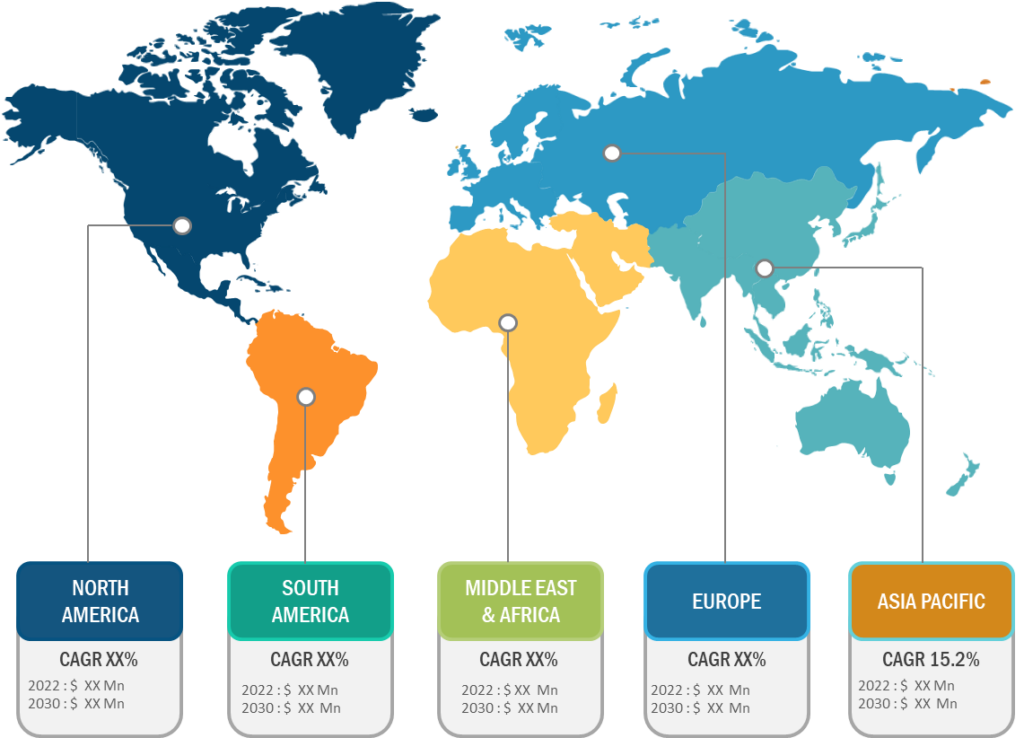
Radiation Oncology Market
The radiation oncology market is expected to experience tremendous growth owing to the increasing prevalence of cancer globally. Radiation is one of the most viable treatment options, and increasing research efforts to improve its efficacy and reduce side effects are expected to propel the demand for this treatment modality in the coming years. Supportive initiatives taken by government, public, and private entities to promote developments in radiation oncology include massive investments and training healthcare professionals, along with the establishment of more radiation oncology clinics. The integration of artificial intelligence (AI) and Machine Learning (ML) is also expected to bolster the radiation oncology market growth in the coming years.
The radiation oncology market in North America is expected to register a CAGR of 12.6% during 2023–2031. The US holds a significant share of the market in this region. The number of professionals having radiation treatment expertise is also on the rise in the country, which can be attributed to the accessibility of a developed healthcare infrastructure. As per the American Society of Clinical Oncology, approximately two-thirds of cancer patients globally are estimated to receive radiation therapy as a part of their treatment. In 2022, over 1 million cancer patients in the US received radiation therapy. The government and healthcare authorities are taking several initiatives to encourage the adoption of radiotherapy. In June 2020, the American Society for Radiation Oncology (ASTRO) introduced new clinical guidelines regarding radiotherapy for nonmetastatic cervical cancer. The new guidelines focus on precisely implementing steps and processes to conduct radiation therapy.

The Asia Pacific radiation oncology market is expected to record the fastest CAGR during 2023–2031. The increasing burden of cancer, coupled with the growing geriatric population, bolsters the demand for radiation oncology in the region. India is expected to record a significant growth rate owing to the increasing prevalence of cancer; the disease has quickly become a public health concern in the country. Approximately 1.39 million cancer cases were reported in the country in 2020. It was also ranked among the world’s leading causes of death in 2020, accounting for approximately 10 million deaths. To combat cancer more successfully, the Government of India has implemented several initiatives that focus on investing resources in building adequate infrastructure for cancer care as well as in implementing mass-scale programs for prevention, control, and screening of common cancer types.
Initiatives to Support Developments in Radiation Oncology Bolsters Radiation Oncology Market Growth
Governments and organizations are introducing missions and programs for the quick and effective treatment of cancer with the use of radiotherapy. In September 2023, the International Atomic Energy Agency (IAEA) announced the “Rays of Hope,” the flagship cancer initiative for the development of radiotherapy infrastructure. Nearly all patients in developed countries such as the US, Germany, the UK, and France have access to radiotherapy. 60% of the patient population in middle-income countries and 10% of the patient population in low-income countries have access to radiotherapy. The “Rays of Hope Cancer Care for All” focuses on the development of radiotherapy services all over the world. Since the launch of this initiative, various countries have received radiotherapy equipment and training required to operate the radiotherapy equipment for timely diagnosis and treatment. All five continents are involved in the initiative with a contribution of US$ 45.5 million (Euro 42 million), while the private sector has invested US$ 768,902 (Euro 710,000) to support this initiative. Elekta, a company involved in the development and manufacturing of radiation therapy and radiosurgery-related equipment, signed a partnership with the IAEA to make efforts for the improvement of cancer treatment by providing radiotherapy equipment across the world. The IAEA has also started training healthcare professionals from different fields, including 14 radiation oncologists, 13 medical physicists, 4 nuclear medicine technologists, 7 nuclear medicine physicians, 7 radiopharmacists, 16 radiation therapy technologists, 7 oncology nurses, 4 medical imaging technologists, and 7 radiologists. Such initiatives taken for the development of radiotherapy are expected to expand the reach of this technique in low-income countries, along with emphasizing the availability of trained professionals and developments in radiotherapy infrastructure, which fuels the growth of the radiation oncology market.
Radiation Oncology Market: Overview
Based on type, the radiation oncology market is divided into external beam radiation therapy and internal beam radiation therapy. The external beam radiation therapy segment held a larger market share in 2023. The internal beam radiation therapy segment is expected to register a higher CAGR during 2023–2031.
By application, the market is segmented into breast cancer, prostate cancer, lung cancer, head & neck cancer, cervical cancer, and others. The breast cancer segment held the largest share of the market in 2023, and it is anticipated to register the highest CAGR during 2023–2031.
Radiation Oncology Market: Competitive Landscape and Key Developments
Varian Medical Systems Inc, Elekta AB, Accuracy Incorporated, IBA Worldwide (Ion Beam Applications SA), Becton Dickinson & Co, Perspective Therapeutics Inc, Nordion, Mevion Medical Systems, NTP Radioisotopes, and Mallinckrodt Plc are among the key companies operating in the radiation oncology market.

